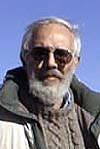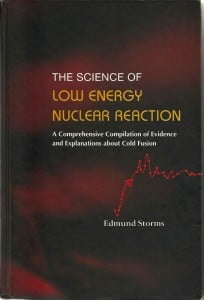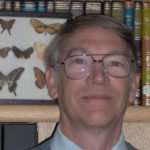 Robert Godes, the President and Chief Technical Officer of Brillouin Energy, is the guest on the Cold Fusion Now! podcast and discusses the latest changes to their signature LENR reactor now in development as a commercial product, the Brillouin Hydrogen Hot Tube.
Robert Godes, the President and Chief Technical Officer of Brillouin Energy, is the guest on the Cold Fusion Now! podcast and discusses the latest changes to their signature LENR reactor now in development as a commercial product, the Brillouin Hydrogen Hot Tube.
Listen to Robert Godes, Brillouin Energy on the Cold Fusion Now! Podcast page
Last June 2018 at ICCF-21, Dr. Francis Tanzella of SRI International reported on a year-long test of over thirty Brillouin HHT reactor cores with thermal power outputs of about 1.5x the initial electrical input, and producing under 10 Watts excess.
Watch video of Dr. Francis Tanzella’s ICCF-21 presentation Nanosecond Pulse Stimulation in the Ni-H2 System here.
Download the ICCF-21 presentation file here.
 On-and-off control of the reaction has been routine for the Brillouin lab since its inception; they use a proprietary “Q-pulse” electrical stimulation to initiate and regulate the excess thermal power. But swapping out reactor cores and producing the same excess power results demonstrated that the year-long focus on quality materials manufacturing paid off.
On-and-off control of the reaction has been routine for the Brillouin lab since its inception; they use a proprietary “Q-pulse” electrical stimulation to initiate and regulate the excess thermal power. But swapping out reactor cores and producing the same excess power results demonstrated that the year-long focus on quality materials manufacturing paid off.
Go to the Brillouin Energy website http://brillouinenergy.com/ to download the technical reports issued by SRI International.
By December 2018, a newly-designed Q-pulse board raised the thermal output to about 50 Watts reliable excess heat, all generated by a 2x COP.
“The highest power run then was 53 watts in and 109 Watts out,” wrote Godes. “A typical run looks like this”:
But just since this podcast was recorded, the HHT thermal power output has surged, more than doubling its December values and jumping to 100+ Watts – with more than 2x power output.
In the interview with Ruby, Robert Godes explains the Hydrogen Hot Tube marketing plans. Brillouin Energy Corp. has negotiated and sold licensing rights to several companies along the Pacific rim and there are negotiations with a mid-Eastern company for regional manufacturing rights.
All this may seem pre-mature; there are still engineering challenges ahead. However, with the LENR field advancing quickly, companies are accepting the risk and making the research investment now, fearing the higher costs after breakthrough.
The next phase of Hot Tube development is also open to a select public. One billion “Brillouin units” will available for purchase at a new company website http://bec.ltd/
From the website:
There is an opportunity for up to 299 US investors and up to 1,700 non-US investors to participate in this fund. Access to the fund will be on a first come, first served basis, beginning soon.
The minimum investment in this fund is 24,750 EUR. Register here to get on the waitlist and receive advanced notice when the units in the fund become for sale.
With the fund’s proceeds, BEC Ltd. will purchase from Brillouin Energy Corp. a dedicated class of preferred stock established in its charter, with the following terms.
Brillouin Energy Corp. will distribute 20% of its net profit to BEC Ltd. until the total distributed profit reaches five times the initial fund value, after which
Brillouin Energy Corp. will distribute 10% of its net profit to BEC Ltd. until the total distributed profit reaches ten times the initial fund value, after which
Brillouin Energy Corp. will distribute 5% of its net profit to BEC Ltd. in perpetuity
BEC Ltd. will distribute all revenues received from Brillouin Energy Corp. to unit holders equally on a per unit basis.
“I’m determined to bring the Hot Tube to market,” says Robert Godes. “We’ve got original equipment manufacturers (OEMs) that can design our reactor into highly energy-efficient products and de-carbonize this planet.”
The amount of hydrogen in an average glass of water contains enough energy density, when applied to Brillouin Energy’s unique boiler systems, to power 30,000 homes for a year.
Listen to Brillouin Energy’s President and Chief Technical Officer Robert Godes discuss, science, technology, and LENR theory on the twentieth episode Cold Fusion Now! podcast with Ruby Carat on our podcast page, or, subscribe in iTunes.
Cold Fusion Now! brings the voices of breakthrough energy scientists to the public and we need your financial support to continue. Go to our website at coldfusionnow.org/sponsors/ to be a Cold Fusion Now! SuSteamer or sign-up on Patreon.
 Patreon is a platform for financially supporting people like us. You can pledge as little as a dollar per episode and cap your monthly spending. When we deliver, you reward the work!
Patreon is a platform for financially supporting people like us. You can pledge as little as a dollar per episode and cap your monthly spending. When we deliver, you reward the work!
Visit us on Patreon to sign-up and become a Patron!




 Nuclear chemist and former Los Alamos National Laboratory rocket scientist Dr. Edmund Storms has been researching cold fusion/LENR since 1989 and talks with Ruby Carat on the Cold Fusion Now! podcast about this new area of science founded by Drs. Martin Fleischmann and Stanley Pons.
Nuclear chemist and former Los Alamos National Laboratory rocket scientist Dr. Edmund Storms has been researching cold fusion/LENR since 1989 and talks with Ruby Carat on the Cold Fusion Now! podcast about this new area of science founded by Drs. Martin Fleischmann and Stanley Pons.
 A LENR Research Documentation Project by Thomas Grimshaw of the Energy Institute University of Texas at Austin has
A LENR Research Documentation Project by Thomas Grimshaw of the Energy Institute University of Texas at Austin has 

 The Cold Fusion Now! podcast hosts Dr. Francis Tanzella, Program Manager of Low Energy Nuclear Reactions (LENR) at SRI International, just retired, and now a private LENR consultant.
The Cold Fusion Now! podcast hosts Dr. Francis Tanzella, Program Manager of Low Energy Nuclear Reactions (LENR) at SRI International, just retired, and now a private LENR consultant.  The sixteenth episode of the Cold Fusion Now! podcast features Dr. Pamela Mosier-Boss, an analytical chemist who spent a career working at the Navy’s SPAWAR laboratory developing environmental sensors and working on LENR.
The sixteenth episode of the Cold Fusion Now! podcast features Dr. Pamela Mosier-Boss, an analytical chemist who spent a career working at the Navy’s SPAWAR laboratory developing environmental sensors and working on LENR. Physicist Dr. Dennis Cravens joins Ruby on the Cold Fusion Now! podcast for a discussion about experimental results gathered over a career of LENR research.
Physicist Dr. Dennis Cravens joins Ruby on the Cold Fusion Now! podcast for a discussion about experimental results gathered over a career of LENR research.